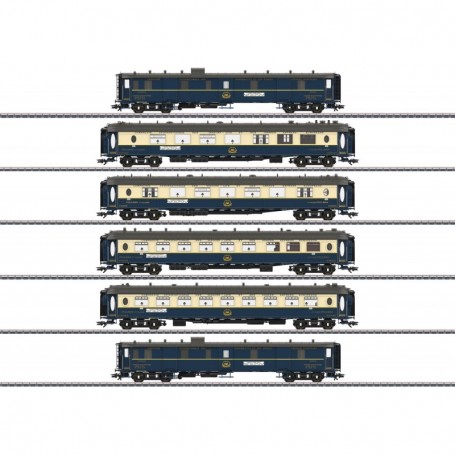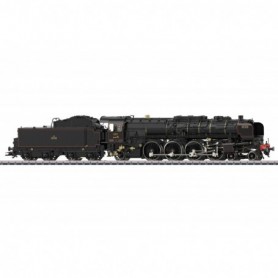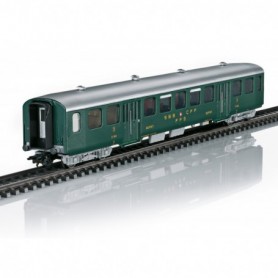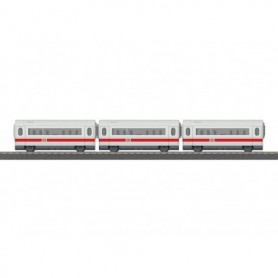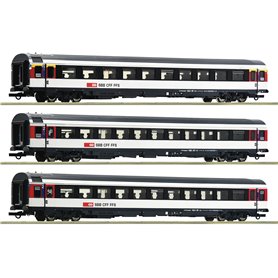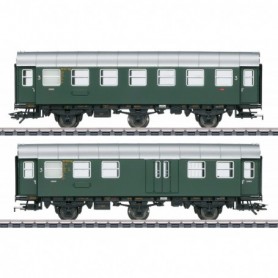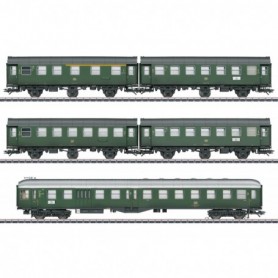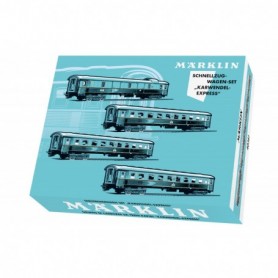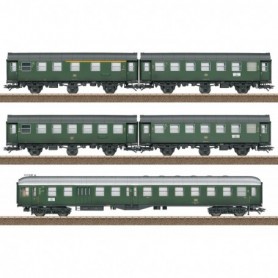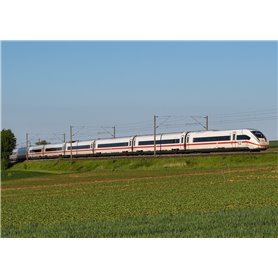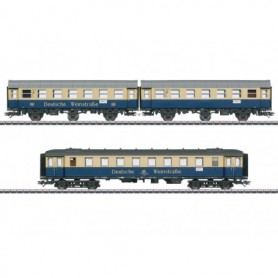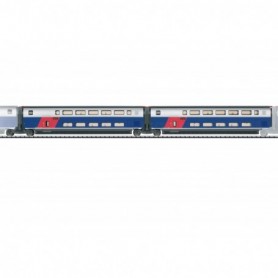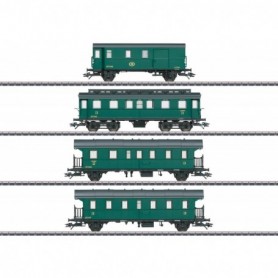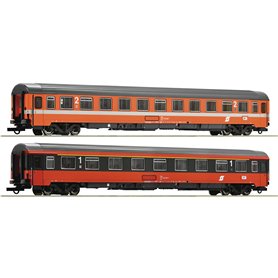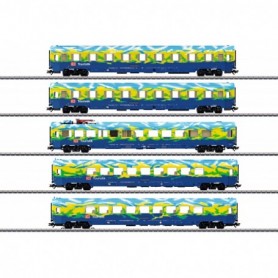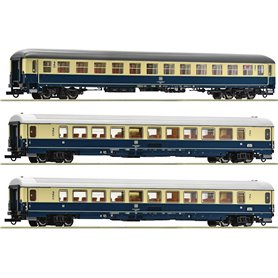Vagnsset med 6 personvagnar CIWL Edelweiss
-
 Betala säkert i vår webshop!
Betala säkert i vår webshop!
Vagnsset med 6 personvagnar CIWL Edelweiss
Edelweiß Parlor Car Set
Model: All the cars have factory-installed LED interior lighting and factory-installed operating, current-conducting close couplers. The parlor cars have lighted table lamps. One baggage car includes marker lights. Each car has a built-in buffer capacitor to bridge short-term spots without current. The interior lighting works in conjunction with the baggage car with marker lights. All the cars have different construction and include many separately applied details. There are also separately applied metal grab irons. The interior details for the parlor cars are custom modelled and come in multiple colors. The buffer height adheres to the NEM. Four main air lines are included for each car. Extended and retracted diaphragms are included. There is a pickup shoe on one baggage car for current pickup. The minimum radius for operation is 360 mm / 14-3/16". Length over the buffers for the baggage car approximately 23.9 cm / 9-3/8". Length over the buffers for the parlor car approximately 26.9 cm / 10-5/8". Total length over the buffers approximately 156.5 cm / 61-5/8".
Prototype: Six different parlor cars painted and lettered for the Compagnie Internationale des Wagons-Lits et des Grands Express Européens (CIWL) as EDELWEISS PARLOR CAR EXPRESS. Two type DD3 baggage cars, one type VPC "Côte d´Azur" parlor car with a galley, one type VP "Côte d´Azur" parlor car without a galley, one type VPC "Étoile du Nord" parlor car with a galley, and one type VP "Étoile du Nord" parlor car without a galley. Train route Amsterdam The Hague Rotterdam Brussels Luxembourg Strasbourg Basle - Lucerne Zürich. The cars look as they did in 1937.
Compagnie Internationale des Wagons-Lits CIWL A grand name from the heyday of railroading. This firm founded in the second half of the 19th century by the Belgian entrepreneur Georges Nagelmackers quickly became the epitome of luxurious travel. Shortly before World War I, numerous CIWL deluxe trains steamed on regular schedules throughout Europe. They had melodious names such as Orient Express, Calais Mediterranean Express, or South Express. They were mostly sleeping car trains offering luxurious sleeping compartments featuring all kinds of comfort.In the Golden Twenties, the market for first class travel recovered very quickly and starting in 1925 the CIWL introduced the first deluxe trains for daily service, which caused a stir from the beginning as parlor car expresses. The CIWL bought new, extremely luxurious open seating cars or parlor cars for these train routes, some cars equipped with galleys. One each car with and without a galley formed a "Couplage". There were also trains with a "Triplage" (two cars, 2nd class without a galley, and one car, 1st class with a galley). Meals were served at your seat, and exclusive porcelain china and silver place settings contributed to the special ambiance. However, there were no special dining cars. The new parlor cars sparkled with more than just excellent inner values. Their outer appearance also radiated an impressive elegance. Its route of Amsterdam Brussels Strasbourg Basle Zürich/Lucerne was no less attractive. Usually, the newest and most powerful steam locomotives of that time were used as motive power, such as the legendary class 241 A of the French East Railroad (EST).The itinerary of the EDELWEISS PARLOR CAR EXPRESS to Basle was 31 kilometers / 19 miles longer than the Rheingold train and it had to overcome the northern foothills of the Vosges between Namur and Luxembourg as well as between Metz and Strasbourg. The EDELWEISS with a running time of 10 hours and 8 minutes was almost as fast (Rheingold 9 hours 46 minutes). At that time, not many steam-powered trains achieved an average speed of 80 kilometers per hour / 50 miles per hour.In the Thirties, the EDELWEISS PARLOR CAR EXPRESS was one of the most successful CIWL trains. The outbreak of World War II then abruptly ended the era of the sparkling deluxe trains including the EDELWEISS.After the war, the train was introduced again and in the first years, it even ran parlor cars again. In 1957, the EDELWEISS then experienced a resurrection as a deluxe train. It was taken into the new European TEE network, and it was run with the brand new, Dutch-Swiss 1st class powered rail cars as the class RAm, which was the prototype of various sought-after Märklin models. But, that is another story.
Compagnie Internationale des Wagons-Lits et des Grands Express Européens (CIWL) is a registered trademark of Wagons-Lits Diffusion (WLD), Paris, France. All rights reserved regarding reproduction or copying. © Wagons-Lits Diffusion - France.
The steam locomotive to go with this car set can be found in the Märklin H0 assortment under item number 39244.This model can be found in a DC version in the Trix H0 assortment under item number 26470.
Completely new tooling.Factory-installed LED interior lighting including buffer capacitors.Parlor cars include lighted table lamps.One baggage car includes marker lights.Current-conducting close couplers.All the cars have different and very detailed construction.Interior details for the parlor cars are custom modelled and come in multiple colors.Buffer height adheres to the NEM.
EDELWEISS PARLOR CAR EXPRESS
- Skala
- 1:87
- Land
- PRIVAT
- Epok
- II
- Spänning
- AC

